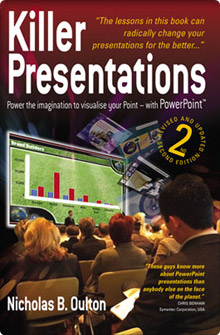
Prove It! Make Your Sales Arguments More Compelling & Believable
“I believe we can help you” isn’t a good sales line.
My belief that I can help you isn’t persuasive; you would expect me to believe that whatever I’m selling works (I hope). If the most common sales mistake is not articulating the reasons to buy, next is assuming that because you have identified ways to drive value for your client, so have they.
Prove it!
Step 1
The search for Proof is more likely to be successful if you know what you are looking for. Often marketing teams search in vain for relevant case studies because they don’t know what they are trying to prove. The client likes us isn’t a good qualification criteria. Lewis Caroll wrote, “if you don’t know where you are going, any road will take you there.” So, start with a specific proof point. For my business, I have to prove that clients improve their sales win rates when they work with my team. If I ask my marketing department to provide me with statistics on that proof, it’s a much easier directive than “please create some compelling case studies.”
Step 2
Look in these four areas:
- Testimonials: 1st person (using your own data and personal experience), 2nd Person (profile the success of a client with similar issues as the prospect), 3rd Person (a credible, independent verification of value, not capability) 3rd person testimonials from a trusted source are the most persuasive, but quoting Private Eye in the UK or National Enquirer in the US don’t qualify, and 2nd person is probably better than 1st. On the whole, testimonials are only as powerful as the source and only if they are relevant!
- Processes: list the steps involved in driving value and compare your process to the competitors (or their lack of process.)
- Technology: whether it’s online systems, hardware, a methodology or Intellectual Property – just try and avoid making it about people. Any sales person with a modicum of passion about their company can wax poetic about how much smarter, faster and more talented their people are than the competition.
- Logical arguments: if in doubt, create a deductive chain starting from a known fact and ending with value for the client.
Step 3
Look for stories that tie in multiple types of proofs. This may include a case study profiling a 3rd party that recognizes the value driven from a process derived from a unique bit of your intellectual property. Now that is compelling.
Step 4
Draw the slides, and then get somebody who has the time and the skills to put them into PowerPoint.
Step 5
Practice.
Step 6
Win!
Simple really – good luck!
